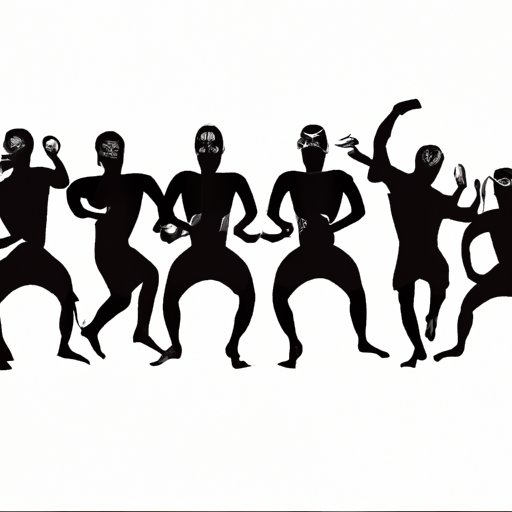Introduction
The haka dance is a powerful and iconic Maori tradition that has become synonymous with New Zealand culture. The haka is an ancient form of storytelling expressed through song and dance, and is believed to have originated in Polynesia. It is traditionally used to honor guests, celebrate special occasions, and as a form of protest or warfare. Today, the haka is most commonly performed by the All Blacks rugby team before each game, and has become a symbol of national pride in New Zealand.

Cultural Analysis of the Haka Dance
The haka is an important part of Maori culture, and is often seen as a way of connecting with one’s ancestors and expressing personal identity. It is also a way of unifying people and creating a sense of community. The words of the haka are often about the power of nature, the importance of family, and the strength of the Maori people. The movements of the haka are symbolic, representing courage, pride, and defiance.
The haka is a deeply spiritual experience for many Maori people, and is seen as a way of honoring their ancestors and paying respect to the land. The haka is not only a physical expression of emotion, but a way of communicating with the gods and connecting with the spirit world.
Examining the History and Impact of the Haka Dance
The haka has a long and rich history in New Zealand, and is believed to have been used as far back as the 13th century. It was originally used as a form of warfare, a way of intimidating opponents and showing off strength and courage. However, it has since evolved into a more peaceful expression of celebration and unity.
In the 19th century, the haka began to be used in a more ceremonial context, such as welcoming visitors and celebrating special occasions. This is when the haka became popularized in New Zealand, and it soon became a symbol of national pride and identity.
Today, the haka is widely recognized around the world, thanks in large part to the All Blacks rugby team. The team performs the haka before every game, and it has become a ritual that is watched and admired by millions of people. The haka has also been adopted by other sports teams, schools, and organizations in New Zealand and beyond.

Evolution of the Haka Dance
Although the haka has been a part of Maori culture for centuries, its meaning and purpose has changed over time. In the early days, the haka was used as a form of intimidation and warfare. However, in modern times, it has become a symbol of celebration and unity.
The traditional meaning of the haka still holds true today, but it has also taken on new meanings. For many Maori people, the haka is a way of expressing pride in their culture and heritage. It is also a way of bringing people together and creating a sense of community.
Conclusion
The haka is an ancient form of storytelling that is deeply rooted in Maori culture. It is a powerful and emotional expression of pride and unity, and has become a symbol of national identity in New Zealand. The meaning of the haka has changed over time, but its purpose remains the same – to honor visitors, celebrate special occasions, and bring people together.
(Note: Is this article not meeting your expectations? Do you have knowledge or insights to share? Unlock new opportunities and expand your reach by joining our authors team. Click Registration to join us and share your expertise with our readers.)
